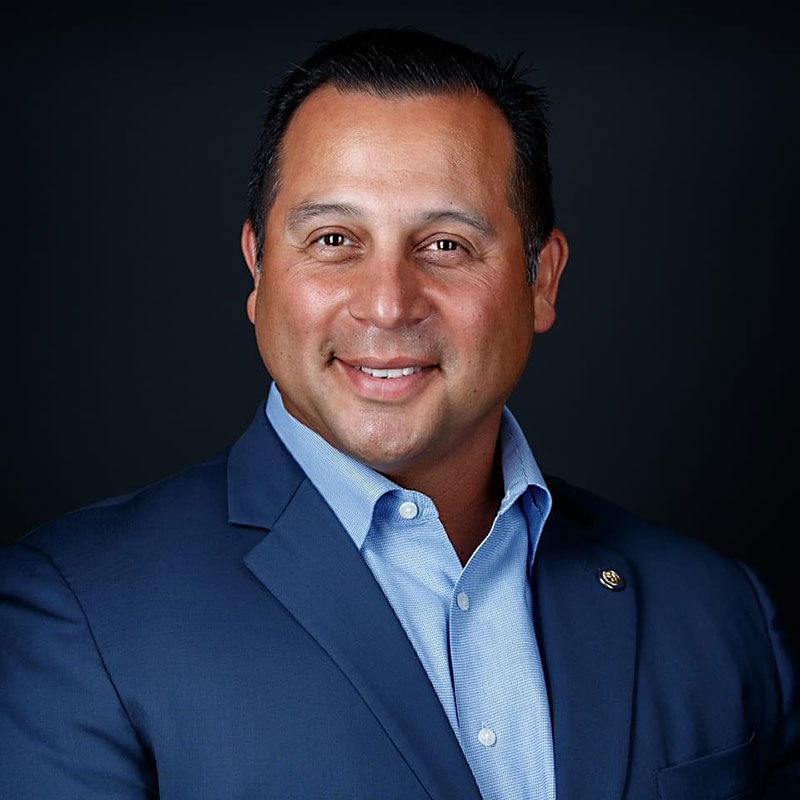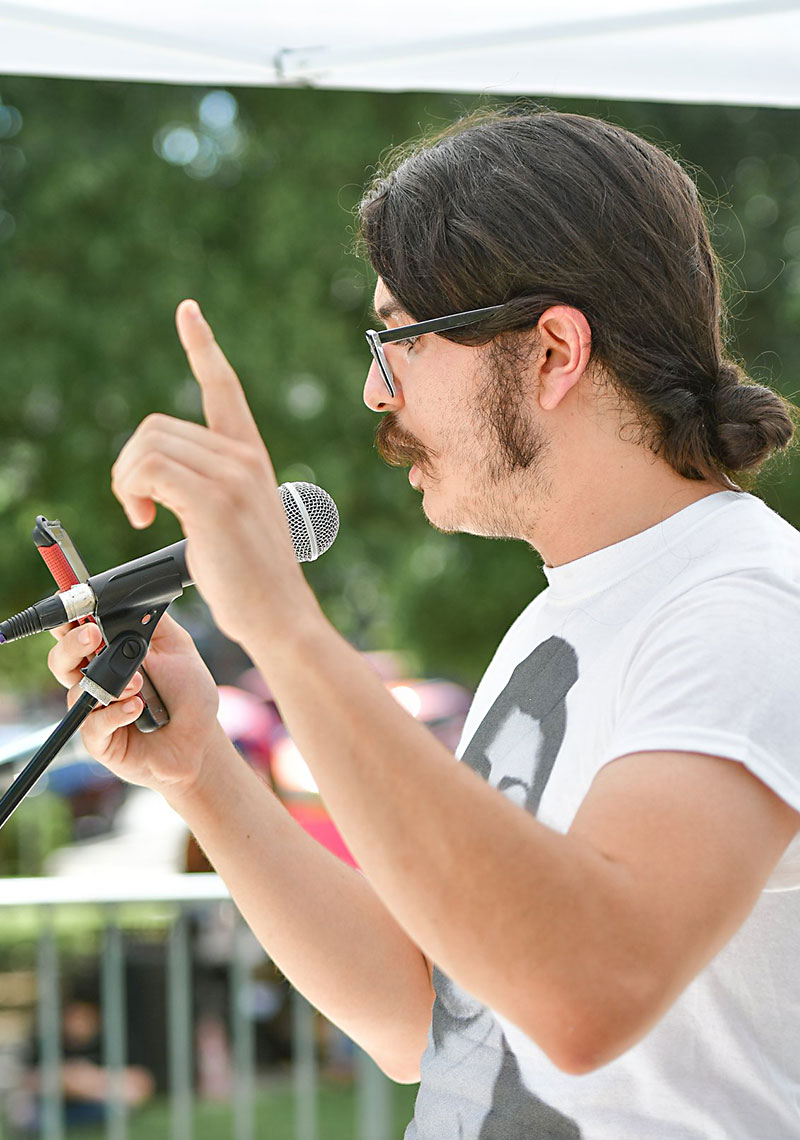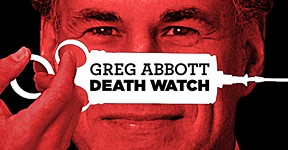Hays County’s Overwhelmed Jail System in Dire Shape, Advocates Say
Some inmates are waiting years to see their day in court
By Brant Bingamon, Fri., Sept. 9, 2022
The first time Hays County Jail officials rushed Melvin Nicholas to the hospital was Feb. 18, 2021. The 59-year-old had been ill for days but, he told the Chronicle, the jail's medical team had provided no care. It wasn't until Nicholas' family came for a visit, saw his condition, and asked for help that jail administrators acted.
"They found out I had a high fever and I had COVID-19 and pneumonia," Nicholas said. "But this was after I had been putting in medical requests telling these people I can't eat – I mean, I can't even get out of the bed. I had said, 'Please come see about me, please help.' I sent them several medical requests. They didn't come to see about me, at all."
The second time Hays County Jail officials rushed Melvin Nicholas to the hospital was exactly a year later, on Feb. 18, 2022. Nicholas' fellow inmates had been worried about him for days. His body was shutting down. His skin was cool to the touch.
"This friend of mine kept asking me how I was doing. I said, 'I'm feeling weak, I can't do nothing, I can't get up out of the bed.' ... When they got me to the hospital my sugar count was 1660. I mean, the highest some of them had ever seen. If it had got any higher than that I probably would have died."
Hospital records show that Nicholas' blood glucose level was 1660 mg/dL, an astronomical number. It presages coma. And indeed Nicholas spent the next two-and-a-half days in a diabetic coma. He awoke frightened in a hospital room in the middle of the night, not knowing where he was. The next day he was back in jail.
In the seven months since, Nicholas says he has been unable to get jail administrators to provide him with meals appropriate for a person newly diagnosed with diabetes. He has heard that other inmates receive such modified meals but has been told by guards that no such accommodations exist. He has stopped eating the food offered at lunch and dinner, buying ramen and fish steaks from the commissary instead.
Nicholas' complaints of inadequate medical care in the Hays County Jail are not unique. In the last month, the Chronicle has spoken to half a dozen inmates and several of their family members. They report that jail staff are either indifferent to inmates' medical needs or simply overwhelmed and unable to provide appropriate care. Three weeks ago, we reported on Ranulfo Benitez-Morales, who continues to worry that he will lose his leg while incarcerated at the jail. Two weeks ago, a wound specialist recommended surgery for the bloated leg, which has an open wound. As of this writing, officials have not scheduled the surgery.
Out of Control
Alex Villalobos learned the ins and outs of the Hays County criminal justice system as a Texas State University police officer from 2007 to 2018. He later became an expert on the county's finances during a two-year tenure as TSU police's chief administrator and as chief of staff for County Judge Ruben Becerra. In 2020, he came within 2,000 votes of being elected sheriff.
When Becerra took office in 2019, one of his first acts was to order Villalobos to conduct a financial, operational, and policy assessment of jail operations. "My task was to look at all the different ways to create efficiencies throughout the county operational plan," Villalobos said. "Find ways to save money, find ways to mitigate costs. What really precipitated it was the overpopulation of the jail."
At the time, county officials were beginning to realize that the jail population was out of control. It had doubled from 2016 to 2018, rising from around 300 inmates to 650. Since the jail had only 300 beds, the county entered into contracts with other jails, some of them hours away by car, to house inmates.
County leaders had anticipated the problem, at least in part. They got approval from taxpayers in 2016 to greatly expand the jail. Nonetheless, Villalobos said that he and Becerra were warned by Sheriff Gary Cutler in early 2019 that when the expansion was complete, the county would still be paying other jails to hold inmates. "He gave us the caveat, 'Hey now, don't get upset but as soon as we open this new section we're still going to be transporting people all throughout the state of Texas and other states, because it will be full by the time we open up,'" Villalobos remembered. "That was a red flag for us initially. And I said, 'Well, why? Who did the projections? Why are we building a jail that's already going to be full?'"
As he conducted his audit, Villalobos found another dimension to the crisis. He says his research showed that jail officials were underreporting what they spent to house inmates, because they weren't including the costs of transporting them to and from the outside jails. According to Villalobos, county officials told the public they were paying about $65 per day, per inmate, the average for Texas counties. His calculations showed the number was actually as high as $167 per day.
With the jail population costing taxpayers so much, and the county unable to build its way out of the crisis, Villalobos saw only one solution: Local law enforcement had to follow the national trend and stop jailing people for minor crimes. "It's simple math," Villalobos said. "It's a simple understanding of how things work. You have a growing population, you have a limited amount of space, so what has to change? You can't think you're going to have the same operation and not overtax the jail. You just can't."
Villalobos convened a summit of Hays County law enforcement – the local police chiefs, the sheriff, the district attorney, the criminal court judges – and asked them to begin using cite-and-release policies. State law adopted in 2007 (now codified in Article 14.06 of the Texas Code of Criminal Procedure) allows officers to give people tickets rather than immediately arresting them for minor, nonviolent offenses like possession of marijuana, petty theft, and driving without a license. This lets persons accused of such crimes schedule when to come in and be booked, so they do not have to leave their children unattended or miss work after being arrested. It also reduces their time spent in jail from a day to a few hours.
As Villalobos worked to get county officials to commit to cite and release, the social justice group Mano Amiga – along with MOVE Texas, students from Texas State, and others – were pressuring the San Marcos Police Department to do the same. After they got a commitment from the police, the activists then showed the department was not in fact using cite and release to the degree it had promised. So they convinced the San Marcos City Council in 2020 to enact an ordinance to force SMPD to adopt the tactic. It was the first such law in Texas.
Eric Martinez, Mano Amiga's policy director, told us that SMPD's use of cite and release probably only helps about 50 people a year, but for him and his allies the policy is about more than good government. "The biggest impact is on those individual people's lives, not like, 'Oh, we saved an extra $10,000 this year.' It does have an impact on reducing jail overpopulation, but not as substantially as would a felony drug diversion program."
From Cite and Release to Cite and Divert
Mano Amiga and other activists have been pushing to broaden cite and release into what's known as cite and divert, which would allow those facing arrest to avoid going to jail at all for low-level offenses, instead meeting with prosecutors to plot alternative courses of action. Those offenses, while still not worth spending time in jail, can be more serious than the ones specified in the Texas code, including possession of less than a gram of cocaine or heroin.
"We've been talking about a cite-and-divert program for these low-level offenses since about 2019," Martinez said. "It's one of those things that we popularized in the public narrative and that the sheriff and the D.A. kind of said they adopted, but never really followed through on. And to be quite frank, they don't care about, nor do they want to have, a diversion program. But they won't flat-out say that, I wouldn't think, because that would mean that they don't care about folks being rehabilitated."
San Marcos is the largest city in Hays County; Villalobos says he has never been able to get the sheriff's office and the smaller cities in the county to create a workable cite-and-release program. He agrees with Martinez that District Attorney Wes Mau does not really want cite and divert, a charge that Mau flatly denies.
"Whoever is telling you that my office has been reluctant to adopt cite and release or cite and divert is incorrect," Mau told the Chronicle. "We have had cite and release in the county for several years. ... Not only have I not been reluctant to adopt it, the sheriff and I, along with most of the local police chiefs, drafted a program for cite and divert well over a year ago now."
Mau did offer such a program, but he and Hays County's justice advocates have been unable to agree on the details. Mau said he's drafted a new version that he will present soon, but in his opinion cite and divert will not lower the jail population much. He thinks the solution is more law enforcement. "We have been in the top 10 fastest-growing counties in the country for many years running, and that growth has brought with it an increase in the number of felony offenses we are seeing," Mau said. "To deal with that, we need not only more jail space, but more police, more prosecutors, more judges, and more trials."
To Villalobos, this approach amounts to an embrace of inefficiency. He says the D.A. could address the overcrowding of the jail immediately by announcing, as has Travis County D.A. José Garza, that he will no longer prosecute possession of small amounts of drugs. "You have a D.A.'s office that's not willing to be part of the solution, because they're still utilizing the lion's share of resources to prosecute low-level, nonviolent crimes, when they should be directing their resources to where they would have more impact," Villalobos said.
The most recent estimate of the jail population, made by the Vera Institute of Justice on August 31, shows 635 inmates, essentially the same number as when Becerra, Villalobos, and Mano Amiga began urging the adoption of cite and release three years ago. In August, the commissioners court – over the strong objections of Becerra – approved a three-year, $17.5 million contract to send 100 inmates to Haskell County, north of Abilene. Hays taxpayers will provide $9,500 per day to house them.
Villalobos told us that jail officials only send nonviolent, low-level offenders to outside jails, because they don't cause trouble. These are the people he believes should not be arrested in the first place.
Four Years and Four Months
Hays County's court system is as overwhelmed as the jail. Its courts are described as some of the slowest in the state. People facing serious charges, like murder, wait years for their trials – and if they can't make or aren't offered bail, they do that waiting in the Hays County Jail. At present, advocates think the jail holds at least seven inmates who have waited more than four years for their trials, some as long as seven years.
Among these is Cyrus Gray, who waited four years and four months for his July trial on capital murder. The case was declared a mistrial after three jurors came down with COVID-19 but before that, the proceedings had given Gray reason for hope. Over several days of deliberations, the jury had eight, then six, then seven jurors voting for acquittal. Nonetheless, the Hays County D.A.'s Office has decided to go forward with a retrial. It's scheduled to begin Oct. 31.
Gray was a 23-year-old physical trainer with no criminal background and no history of violence when he was arrested in 2018 for the murder of Texas State student Justin Gage. The D.A. argues that phone records and the testimony of three witnesses (two of whom recanted their testimony on the stand under cross-examination) prove that he and his childhood friend DeVonte Amerson murdered Gage in late 2015. (The Chronicle will be examining the case in more detail in an upcoming issue.)

Entering the jail was a shock for Gray. "I'm in here with people who've been in prison a bunch of times and they think it's nothing, they think it's cool," he said. "And I'm just the odd one in here – I went to school, I got a good job, I'm trying to stay out of situations like this. And guys are fighting all day, guys are testing you, there's all kinds of unnecessary stuff going on that really nobody should have to deal with."
Once Gray realized he wouldn't be able to make bail – his court-appointed attorney didn't seek a bond – he began reading law books and writing letters to advocacy groups and media outlets. He soon noticed problems with his mail – letters that arrived months after the dates they had been sent and correspondents who told him they had never received his letters.
"It got to a point where my mail wasn't allowed to go out," Gray said. "To where they would shake us down and only my stuff would be totally destroyed. And there's really no one to complain to about these things because they're always going to take their officer's side, so you're wasting your time."
But Gray did complain. "I got a letter that was dated three months before the date that they gave it to me and I asked to speak to somebody about it. And the guard got upset. And as a result he told them to move me out to another tank. He knew that in the other tank these guys were jumping Black people for whatever reason."
The guard Gray had annoyed took him to a cell occupied by eight members of a Latin American gang known as Tango Blast, according to accounts gathered by Hays County Jail Advocates' Amy Kamp, who also worked in the Chronicle's news department from 2014 to 2016.
"When I get in there, I let the guard know, 'Hey man, I'm letting you know right now these guys are gonna try to jump me,'" Gray said. "'I fear for my life and at this point you're supposed to move me somewhere or something.' And that guard ignored me. And I told him multiple times and he didn't do anything. And sure enough, these guys end up jumping me. And instead of trying to do something about it, he came in the cell and stood there and watched for a little bit. And then once he felt like it was enough he tried to pull them off me. Then all the other guards came in and they moved me back to the tank and put me on lockdown."
The Chronicle spoke with two inmates who corroborated Gray's version of the event and described other instances, as did Kamp, in which guards opened doors or transferred inmates to cells to facilitate beatings. The consensus among these inmates is that some guards at the jail use cell transfers to punish inmates they've become angry with. Sheriff Cutler denied the accusations in a brief message to the Chronicle: "The allegation of jail staff facilitating assaults on inmates is ridiculous."
Gray reports that the beating caused his jaw to become misaligned. He has to massage it for 20 minutes each morning to get it to open and close. He also has lingering neck and back pain from the attack. But after years of asking for help for an impacted wisdom tooth, and never receiving it, he has decided not to seek medical care for the injuries from the beating. "At this point I just deal with stuff on my own and don't even write medical any more," he said. "It takes so long to hear back and most of the time you don't even hear back."
DeVonte Amerson is one of the inmates who corroborates Gray's allegation. He was indicted with Gray under Texas' "law of parties," which specifies that anyone involved in a crime can be held accountable for whatever happens during its commission. Prosecutors are trying to send both away for life without parole, although testimony at Gray's trial indicated they have no proof that either he or Amerson was actually in the room when Gage was killed, and they make no claim as to which man pulled the trigger.
Amerson converted to Islam while in jail and said that he has had trouble with guards who have infringed on his right to worship as he pleases. "They started taking my prayer rugs. They came five days in a row, coming to my cell specifically to take me and my cellmate's rugs," Amerson said. "It got to the point that I was like, you know what, I'm going to have to stop doing what I'm doing so they can't take nothing from me. As long as they have something to take, it's going to affect me. So I had to cut back on doing my prayers and all of that so I could continue to have my peace of mind."
“I’m the Only One Fighting for Me”
Each inmate we spoke with has had difficulty receiving attention, or even communication, from his court-appointed attorney. Amerson is on his second attorney after after filing motions and grievances to get his first replaced. He became upset when the attorney failed to seek a bond after his arrest. Like Gray, he began studying law books and realized that the only certain way to get a court-appointed attorney removed from a case is to file a complaint against him with the state bar, creating a conflict of interest. He did so. That triggered a hearing before a district court judge.
"I wrote the state bar to fire my attorney. So they had to bring me up [to court] to address the situation. I started talking to the judge about the stuff going on with my case, I was telling him my constitutional rights. I'm like, 'I'm being held without a bond. I been here this long, I don't have a bond.' And I was quoting from the Texas Code of Criminal Procedure, Article 17.38, the rule applicable to the bond ... And the judge was like, 'Well, Mr. Amerson, it's not up to you if you keep him.' But at this point I done already created the conflict of interest. I know for a fact he can't stay on my case."
Amerson has doubts about his current attorney as well. The new attorney did schedule a bond hearing for Amerson, however; it was conducted on Aug. 2, four-and-a-half years after his arrest. Gray received his first bond hearing at the same court session, with his attorney arguing that he was not a flight risk. The judge, who'd recently presided over Gray's trial and knew the prosecution's case, seemed unimpressed with Assistant D.A. Ralph Guerrero's argument that Gray had been a marijuana smoker who should continue to be held without bond. The attorney asked for a $150,000 bond; the judge set it at $250,000. Amerson's lawyer came next. He seemed to make no argument in favor of a lesser bond and bail was set at $500,000. Observers were left to wonder why the amounts should differ.
Melvin Nicholas had expected to receive a bond hearing at the same court session. But he says that his attorney failed to ask for a bond, instead requesting money for a private investigator. Nicholas, who is accused of murder, feels that he too must advocate for himself. "I wrote to everybody just to try to get them to just look into my case," he said. "If you just look into it you're gonna see where all the misconduct is coming from. In the jail, I'm not getting the proper medical attention, and from the court system I'm getting no assistance from my lawyer at all. A lot of times you get frustrated to where you feel like you want to give up, but I can't give up! Because I feel like I'm the only one fighting for me in here."
In addition to their efforts on cite and release and cite and divert, Becerra, Villalobos, and Mano Amiga have been trying for the last three years to bring a public defender's office to Hays County to improve representation for inmates like Nicholas and Amerson. A PDO would assign free lawyers for those who can't afford them and help drive down the jail population by challenging the charges against defendants, arguing for lower bail amounts, and negotiating better plea deals. Good lawyers also put pressure on prosecutors to drop weak cases.
Villalobos says that the same conservatism that has kept cite and divert from happening has hampered efforts to establish a PDO. Republican members of the commissioners court voted in 2020 against a plan that would have used funds from a state agency called the Texas Indigent Defense Commission to get the process underway. "We came up with a program, there were dollars that were available that had not been used by the state to pretty much fund the entire deal," Villalobos said. "But the commissioners court denied the application ... They voted along party lines." (The court is 3-2 Republican.)
After that defeat, Eric Martinez identified a different approach to establishing a PDO, using American Rescue Plan Act funds. He and his allies were able to flip Republican Commissioner Lon Shell's vote. "We worked really long and hard to make the public defender's office nonpartisan," Martinez said, "and there are conservatives who support public defense and indigent defense. At the outset, it was kind of seen as a conservative versus liberal issue until Commissioner Shell came around to the merits and the fiscal responsibility of it."
Martinez said there are still a few details left to resolve but he is confident that a PDO is coming to Hays County.
Super Ready
When DeVonte Amerson was arrested, San Marcos police officers literally took his 1-year-old son out of his arms. Amerson laid on the ground in his front yard, shouting to his mother, Chelesta, to care for the baby.
Amerson had been working the night shift at Walmart in the months before his arrest so he could be with his son during the day, when his girlfriend worked. In the years since, the family has adapted to Amerson's absence. His girlfriend has left the relationship and moved on. Chelesta continues to help care for the boy. She tells him that his father is at the hospital, a place he's afraid of.
As Amerson and Gray have sat in jail, they've become guides for inmates seeking advice and consolation. Amerson is ready for his trial to begin but does not know when that will be. He's been told perhaps early next year. He leans on his faith, believing that the weakness of the case against him will inevitably be made plain, and the criminal justice system of Hays County will be forced to release him. He laughed when the Chronicle asked if he was ready to leave jail and return to his mother, his four sisters, and his son.
"Man, you just don't know. I be so ready to get up out of here. I be super ready. But I have faith and I know what's going on. And one thing I know is, if you didn't do nothing you don't have nothing to worry about. I just feel like God knows my heart, people know me, people know my heart, and I feel like I have nothing to worry about.
"But it's just the fact of sitting here ..."
Got something to say? The Chronicle welcomes opinion pieces on any topic from the community. Submit yours now at austinchronicle.com/opinion.










